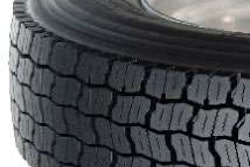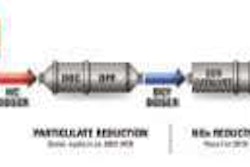
In reality, CSA 2010 is already in effect
If you’ve been paying any attention at all, you know that the live date for the Federal Motor Carrier Safety Administration’s Comprehensive Safety Analysis 2010 is less than three months out, unless it’s pushed back a second time. But if you think that you have until then to start worrying about your fleet’s safety performance, you’re in for a rude awakening. When CSA 2010 does go live, FMCSA will look back at state crash reports, safety-based roadside violation inspections and out-of-service violations dating back 24 months.
While the industry has been so concerned with the severity weights associated with violations within the seven Behavior Analysis and Safety Improvement Categories (BASICs), little ink has been spilled discussing the time element of the Safety Management System (SMS) equation. Specifically, any violations that have occurred within six months prior to CSA 2010’s launch will receive a time weight of 3, which is multiplied by a violation’s severity weight (1-10 depending on the violation’s crash risk). Violations occurring from six to 12 months will receive a time weight of 2, and violations older than 12 months but within the last 24 months receive a time weight of 1. Violations occurring outside the 24-month window are not measured. Past performance – especially in the last three months and the three months to come – will have a huge impact on whether your fleet is in the crosshairs of an intervention.
Tommy Hodges, chairman of the American Trucking Associations and Shelbyville, Tenn.-based Titan Transfer, made this point during an address to fleet executives and industry suppliers at last month’s Commercial Vehicle Outlook Conference in Dallas. “It’s already started,” Hodges said. “You’re building your history today. If you haven’t been working on your seven BASICs today, get ready for an intervention tomorrow.”
“If you haven’t been working on your seven BASICs today, get ready for an intervention tomorrow.”
To allow fleets to get an idea of where they stand in relation to their peers, last month FMCSA made live the ability for all carriers to view where they stand in each of the seven BASICs (see page 42). When CSA 2010 does go live, your scores are visible not only to you, but also to shippers, insurance carriers and the public. Hodges believes driver data through the Pre-Employment Screening Program will increase transparency further. “Insurance companies will have access to driver information through you because they are going to ask you to provide it on submission,” he says. “If you have drivers that you’re accepting into your system that don’t meet their standards, they aren’t going to buy your risk.”
If your organization hasn’t started CSA 2010 driver training by now, you’d better act fast. Your drivers must understand SMS and how his or her actions can negatively impact the entire organization.
“If you’re not ready to get out and start driving behavior rather than reacting to behavior, you have a major lesson coming for you,” says Hodges. “Everything is the same stuff we are supposed to be doing all along. We’ve just reacted to violations, and now we have to get out in front of it.” n
EDITOR’S NOTE

Jeff CrisSey is Editor of Commercial Carrier Journal.
E-mail [email protected] or call (205) 248-1244.











